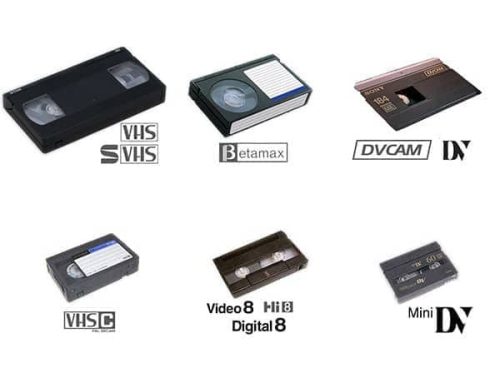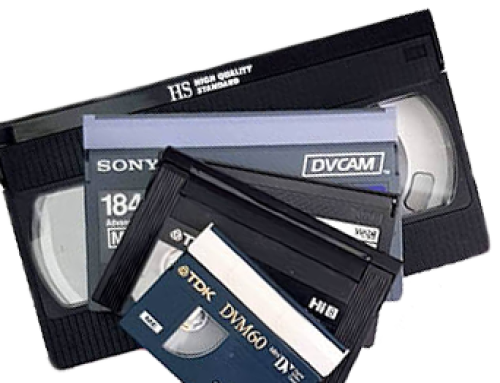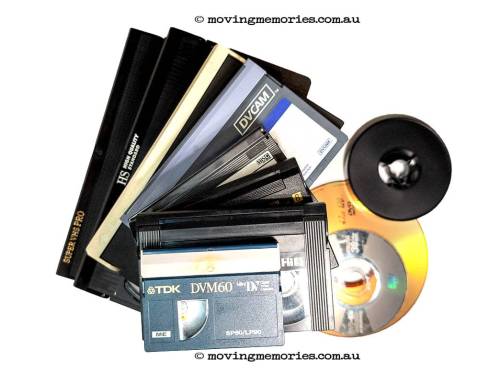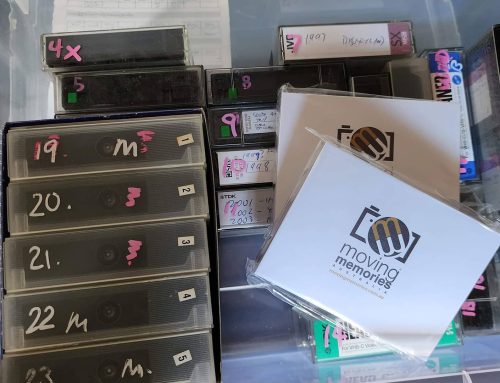Last Updated on 08/04/2025 by Emmanuel Farrugia
VHS Video to USB Converter
Introduction to VHS and Its Historical Significance
Ah, the VHS era! A time when bulky tapes captured the essence of unforgettable family gatherings, jubilant holidays, and all those candid moments in between. From the mid-1970s through the early 2000s, VHS tapes became ubiquitous in households around the world, allowing families to record their cherished memories and replay them with the simple push of a button. Nostalgia sweeps over many as they recall gathering in front of the television, popcorn in hand, eagerly awaiting the latest home movie adventure. Whether it was a school play, a quirky birthday celebration, or a beloved film, the VHS format became a time capsule, safeguarding our lives in monochrome snapshots.
As technology has advanced, the historical significance of VHS cannot be understated. It ushered in an unprecedented era of personal media consumption, giving rise to a generation that grew up with the power to archive their lives. The phenomenon of “taping” became a cultural fixture, allowing the mundane to transform into memorable storytelling. However, even those cherished moments are at risk of fading away to time if not preserved properly.
The Evolution from VHS to Digital: Why Make the Switch?
The fragility of VHS tapes is a stark reality that many are beginning to face. Over the years, magnetic tapes degrade, becoming susceptible to physical wear and environmental damage. The rich, emotive moments captured on these tapes risk being lost forever, buried under dust, mould, and degradation. In contrast, digital formats transport our memories into a future-proof realm. Digital preservation allows our cherished memories to flourish for generations to come, free from the threat of physical decay.
Furthermore, the obsolescence of VHS players has rapidly accelerated in recent years. As technology continuously evolves, the once-hallowed VHS player has been relegated to the attic or garage—too often collecting dust, while streaming services and digital media flourish. Thus, the transition to digital is not merely a choice; it’s a necessity for ensuring our beloved reminiscences remain accessible and intact.
What is a VHS Video to USB Converter?
A VHS Video to USB converter serves as a bridge, transforming the antiquated analogue tapes into modern digital files. It may seem like a marvel of modern convenience, but the intricate process is rooted in technology that breathes new life into obsolete formats. The role of the converter is crucial; it captures the analogue signals emitted by the VHS tape and subsequently processes these into digital files that are easily transferable to computers or USB drives.
But how does this marvel work, you ask? Essentially, the converter transmits the video while synchronously converting it into digital code—think of it as a translator, converting a beloved language into a modern vernacular. The beauty lies in its simplicity; most converters are designed with user-friendliness in mind, accommodating everyone from tech-savvy enthusiasts to those who are less acquainted with technology.
Different Types of VHS to USB Converters
When it comes to VHS to USB converters, a delightful array of options awaits eager users. Standalone converters epitomise plug-and-play convenience; simply connect your VHS player and watch the magic happen. These handy gadgets often feature user-friendly interfaces, allowing for smooth transfer without any technical acrobatics.
On the other hand, converter boxes with software offer advanced features and flexibility for those looking to delve deeper into video manipulation. These devices allow users to capture additional nuances, providing tools for editing and enhancing videos beyond simple conversion.
Moreover, DIY solutions abound, yet they may necessitate a dash of tech prowess. Meanwhile, professional-grade devices, while potentially pricier, can ensure that even the most delicate and cherished tapes undergo a faithful transformation into digital format. Ultimately, the choice hinges on personal preference and desired functionality.
Key Features to Look for in a VHS to USB Converter
As you decide on the best method to convert VHS to digital, several key features should guide your decision-making journey. Firstly, compatibility is paramount; ensure that the converter harmonises seamlessly with your VHS player and computer system. Modern technology will only serve you well if they speak the same language!
Next on the list is video quality output. No one desires a digital copy that pales in comparison to the initial viewing experience. Opt for converters that guarantee high-resolution digital copies, preserving the vibrancy and clarity of your cherished footage.
Ease of use and setup come next, as an accessible process will make your conversion adventures all the more enjoyable. Look for devices that encourage seamless integration into your tech ecosystem, regardless of how tech-savvy you might be.
Finally, consider any extra features that might enhance your conversion project. Options for editing, enhancing, and customising videos not only add flair but allow for a personalised touch to your digital masterpieces.
The Importance of Preserving VHS Memories
Preserving VHS memories is an emotional endeavour that transcends the mere act of digitisation. It encapsulates the essence of family history, safeguarding those precious moments from the inevitable deterioration that threatens them. Digital formats grant families the freedom to share easily, allowing members near and far to relive the sentiments captured in flickering frames.
In a world where immediacy is paramount, digital conversion provides enhanced accessibility. No longer restricted to a single VHS player, these memories can flourish across a multitude of devices, available for storytelling at a moment’s notice. The emotional value of this conversion lies not only in prevention but in the celebration of familial bonds and shared narratives.
How to Set Up and Use a VHS to USB Converter
Setting up your VHS to USB converter involves a remarkably straightforward but vital process. Begin by connecting your VHS player to the converter using the supplied cables. This usually involves plugging the audio and video outputs of the VHS player into corresponding input ports on the converter.
Next, if the converter requires additional software, install it following the provided instructions—an essential step for ensuring a seamless transfer process. The software acts as your guiding companion, streamlining the conversion process.
Finally, in a step-by-step guide to converting tapes to USB, select the tape you wish to transfer, push ‘record,’ and let the conversion magic unfold. Patience is key; the process may take some time, but soon enough, you’ll have a treasure trove of digital memories filed away for safekeeping!
Common Challenges When Converting VHS to USB
While the conversion process is generally user-friendly, there are a few common challenges that may arise. One frequent woe is the dreaded audio-video sync issue, which can render a lovingly recorded moment into a frustrating experience. If you encounter this, it’s often due to the converter’s settings; adjusting them can remedy the misalignment with relative ease.
Video quality may also be problematic during conversion. Ensure you’ve cleaned your VHS tapes thoroughly prior to beginning; any dirt or abrasions could compromise the final result. Additionally, identifying and fixing damaged or degraded tapes should be a priority. Repair tapes may require professional assistance, but those seeking to DIY can often apply gentle cleaning techniques or utilise restoration kits.
Tips for Achieving the Best Video Quality in Conversion
To ensure a high-quality outcome from your conversion efforts, cleaning and preparing your VHS tapes before conversion is vital. Dust and grime can congregate on the tape surface, ultimately resulting in a muddied viewing experience. A gentle wipe with a soft cloth can help your tapes shine brighter and yield improved results.
Adjusting device settings for optimised video and audio output can also elevate the conversion experience. Many converters provide options to tweak resolution and sound quality—don’t shy away from these professional touches that can make all the difference!
Lastly, utilising software to enhance or restore old footage is an extremely useful strategy. Many editing tools boast remarkable capabilities to brighten colours, reduce noise, and even revive faded images. Investing a bit of time in this phase can yield sublime results.
How to Choose the Right USB Drive for Your VHS Conversions
Choosing the right USB drive for your VHS conversions is akin to selecting the ideal vessel for your hard-earned treasures. Storage capacity is a pivotal consideration; it’s essential to evaluate how many videos can comfortably fit on your USB stick and to account for various file sizes. Opt for a drive that accommodates not only the current collection but also your anticipated future projects.
Speed and performance are equally crucial for smooth playback. A sluggish USB drive can lead to frustrating buffering and choppy playback, while a high-speed drive ensures that everything plays seamlessly—an especially important factor when sharing with family and friends.
Lastly, contemplate the longevity and durability of the USB drives for long-term storage. Consider investing in a reliable brand known for producing robust and resilient products. After all, the objective is to safeguard your treasured memories for years to come!
Editing Your Converted VHS Videos
Once your VHS videos have undergone conversion, the fun truly begins with editing! Basic video editing software provides the ideal platform for trimming and refining footage, ensuring that your final product is polished and captivating.
For those keen on adding a splash of creativity, you can embellish your videos with titles, transitions, and special effects to personalise them further. Imagine the delight of family members as they watch a previously static memory come to life with engaging visuals and effects!
Audio quality also plays a crucial role in video editing. Enhancing audio quality and syncing it effectively with visuals is key to presenting a cohesive experience. Many editing programmes feature audio tools capable of correcting distortion or static to create a flawless auditory accompaniment.
Storing and Organising Your Digitised VHS Tapes
When it comes to storing and organising your newly digitised VHS tapes, best practices are vital for maintaining structure and accessibility. Establishing coherent file organisation and naming conventions can help you locate your cherished memories with ease; a simple yet effective system potentially saves hours of frustration.
Utilising cloud storage is another excellent way to safeguard your digital videos. The internet offers a haven for secure backups, ensuring that even if physical drives are lost or damaged, your memories remain intact in the ether.
Finally, don’t underestimate the value of creating backup copies for added security. Just as one wouldn’t trust a single vault with all their treasures, equip yourself by ensuring secondary copies exist on different devices or formats to protect against unforeseen mishaps.
The Environmental Benefits of Converting VHS to USB
The environmental implications of converting VHS to USB extend beyond mere convenience. The act of digitising your tapes significantly reduces e-waste by eliminating the need for outdated VHS tapes and players that often end up in landfills. Embracing digital formats not only helps declutter but lightens our collective carbon footprint.
Additionally, digitisation minimises the physical storage needs associated with VHS tapes, which can take up valuable space. A tidy, digital library allows easier access, supporting an organised lifestyle that maintains harmony in living spaces.
Ultimately, converting these tapes is an act of preservation—not just for your personal memories but for the planet. By transitioning to digital formats, you contribute to a sustainable future where memories are eternally cherished without compromising the Earth for generations to come.
The Cost of Converting VHS to USB: Budgeting for the Process
As you embark on the VHS to USB conversion journey, budgeting plays a significant role in shaping your experience. A prudent approach entails comparing the costs of DIY conversion against professional services to determine what best aligns with your needs. DIY solutions may offer an initial appeal, but keep in mind the time and potential complications involved.
Fortunately, affordable converter options abound for every budget! A little research can reveal an array of devices that cater to various financial constraints while still delivering solid performance and results.
However, do not lose sight of the long-term value of investing in digital preservation. By converting VHS tapes to USB, you are essentially laying the groundwork for future generations to revisit those treasured memories, making the investment well worth it in terms of both time and money.
Professional VHS to USB Conversion Services: When to Consider Outsourcing
While DIY methods can be enticing, professional VHS to USB conversion services can be indispensable for delicate or damaged tapes. Advantages abound, particularly when it comes to ensuring high-quality output and using advanced equipment typically not available to the average home user.
Additionally, professional services can mitigate risks involved with amateur attempts at conversion. Tapes that are brittle or exhibit signs of degradation require expert handling and care, ensuring that potentially invaluable memories aren’t compromised in the process.
When the time comes to choose a reliable conversion service provider, consider their reputation, customer service, and guarantees on outcomes. Doing a bit of homework will ensure that your precious memories are in safe hands, allowing you to breathe easy knowing they are being transformed with precision and reverence.
The Role of Audio in VHS to USB Conversion
While visual clarity may grab the spotlight, the importance of capturing clear sound during the conversion process should not be overlooked. Poor audio quality can tarnish even the most visually stunning footage, rendering the experience lacklustre at best.
Common audio problems, such as distortion or static, can often be resolved during the conversion process, but it requires vigilance. Adequate monitoring of sound levels and settings is vital to achieving a pleasing auditory experience.
Additionally, there are many tools available to enhance or restore poor-quality audio. Many editing programs come equipped with sophisticated features that can significantly elevate your audio quality, allowing users to breathe new life into soundtracks that may have faded over the years.
VHS Tapes in Different Formats: Compatibility Considerations
While venturing into the world of VHS conversion, compatibility considerations are paramount—especially concerning the myriad formats in which tapes may exist. The distinction between PAL and NTSC formats is essential; different regions developed these formats, and knowing which one you have will determine the necessary steps for conversion.
Additionally, handling different tape formats such as VHS-C or S-VHS may require specific equipment or adapters, which are often overlooked. Researching the type of tape in hand will ensure that one has the appropriate tools to achieve successful conversion.
For those with non-standard or rare tape formats, seeking professional help may be a prudent choice to navigate the potential pitfalls of obscure technology. Understanding your material’s unique requirements will pave the way for a seamless conversion experience.
Comparing VHS to USB vs. VHS to DVD Conversion
The choice between VHS to USB and VHS to DVD conversion may leave users pondering. Both options present their pros and cons, but the USB path often shines in its flexibility and future-proofing capabilities. USB drives offer ease of access, compatibility with various devices, and generous storage capacity, ideal for today’s fast-paced digital environment.
Conversely, DVDs may appeal to those who favour physical media or wish to create a traditional viewing experience. However, this medium does have its limitations—such as a finite storage capacity and reliance on optical drives that may soon be obsolete.
Ultimately, considerations of usability and personal preference will guide the final decision. Whether you opt for USB or DVD, the goal remains the same: preserving those precious memories for future enjoyment.
The Future of Digital Video Conversion
Looking ahead, the landscape of digital video conversion continues to evolve at a breathtaking pace. Exciting trends in video preservation and emerging technologies constantly redefine how we manage our precious memories. The advent of AI and machine learning is particularly noteworthy, imbuing digital conversion technology with remarkable capabilities to enhance quality and restore lost masterpieces.
New storage mediums and formats beyond USB are also gaining traction, providing consumers with even fewer limitations when safeguarding their cherished moments. As technology marches on, embracing these advancements will ensure that memories remain vibrant and intact for generations to come.
Frequently Asked Questions about VHS to USB Conversion
Inoo ID bringing clarity to the often perplexing realm of VHS to USB conversion is paramount. Individuals frequently have concerns regarding the conversion process, such as what to do if their VHS tapes are damaged or mouldy. It’s crucial to assess the condition of the tape before embarking on a DIY conversion; in most cases, seeking professional assistance is the best course of action for severely compromised tapes.
Moreover, ensuring that your digital files are safe and secure is a common concern. Employing robust backup strategies, including both physical and cloud-based solutions, can offer lasting peace of mind.
When questions arise regarding this rewarding yet complicated process, having a readily available source of reliable information can transform apprehension into empowerment.
Conclusion: The Enduring Importance of Preserving VHS Memories
The journey of converting VHS to USB is a vital step in protecting the tapestry of our past. As memories encapsulated in video begin to fade, committing to digital preservation ensures they remain accessible—a legacy for future generations. The comfort derived from knowing treasured moments are safeguarded is incomparable.
Ultimately, embracing digital technology serves not just as a means to an end but as a bridge connecting us to our cherished past. By undertaking the adventure of conversion, we celebrate the rich narratives that define our lives, ensuring they resonate for decades—if not centuries—to come. Let the journey begin!







